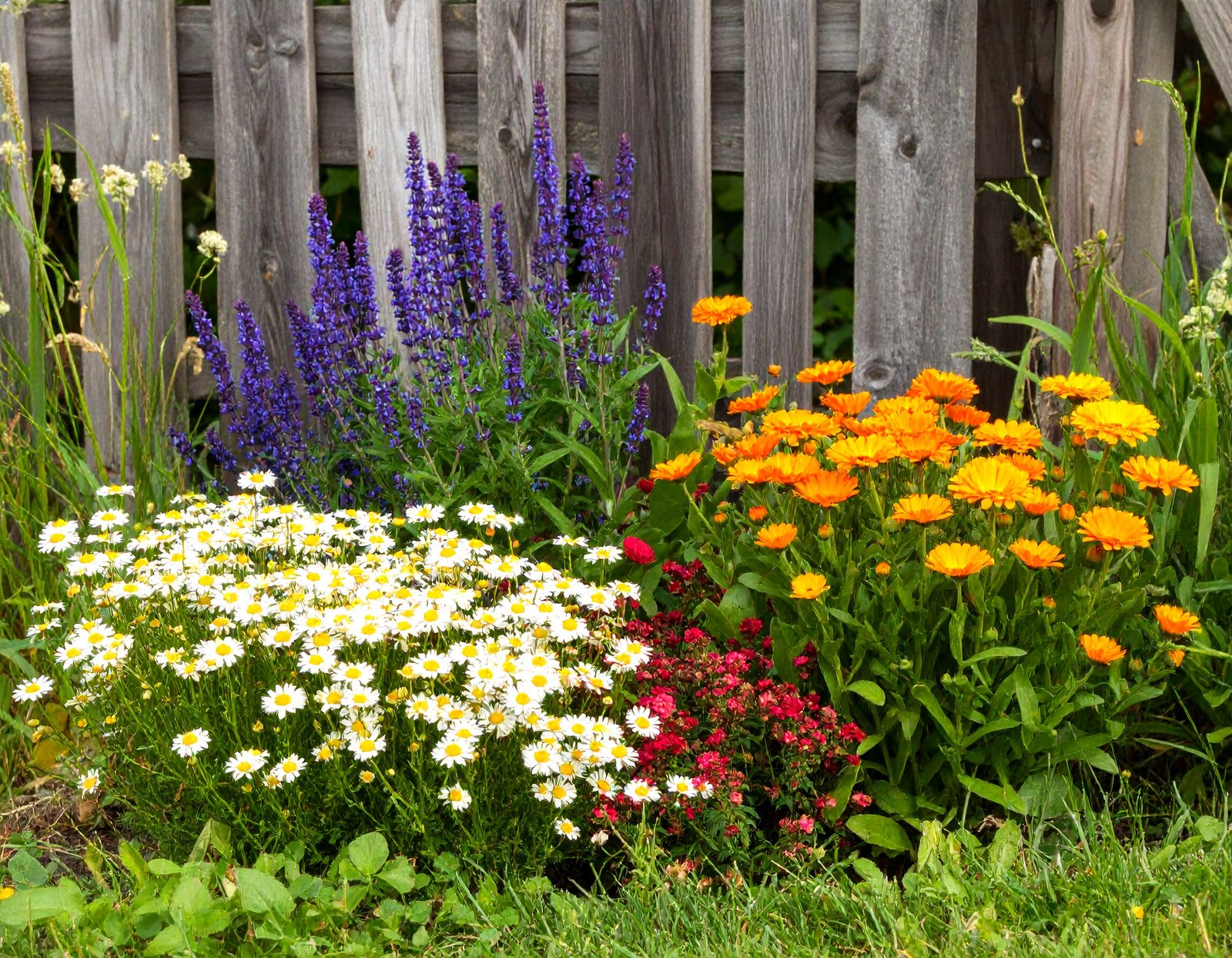
Turmeric and Friends: Creating an Anti-Inflammatory Garden Bed at Home
Why Create an Anti-Inflammatory Garden Bed?
Modern science and traditional wisdom agree: plants like turmeric, ginger, and garlic have potent anti-inflammatory properties that support whole-body wellness. By growing these medicinal herbs and their companions together, you can harvest your own healing ingredients, right from the backyard or balcony. An anti-inflammatory garden bed is not only practical but beautiful—rich in fragrance, color, and health benefits.
This themed bed combines roots, bulbs, and leafy herbs for year-round harvests and a constant supply of nature’s best inflammation fighters. Perfect for the home cook, herbalist, or anyone wanting to boost daily wellness from the ground up!
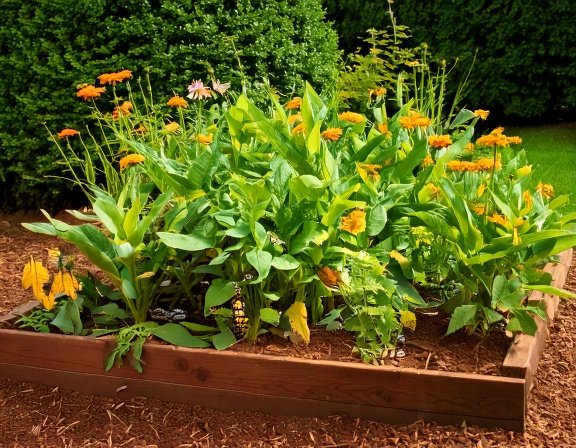


Step-by-step planner for designing your own healing bed, plus daily anti-inflammatory recipes using fresh garden herbs!
Download Now
Key Anti-Inflammatory Plants to Grow Together
Designing a healing garden isn’t just about beauty—it’s about synergy. These powerful plants not only reduce inflammation in the body but also thrive when grown side by side, supporting each other’s growth and creating a vibrant, resilient ecosystem in your backyard. Together, they form a natural “wellness bed” that nourishes both soil and soul.
Turmeric (Curcuma longa)
The golden root of healing, turmeric is celebrated for its potent compound curcumin, which helps the body manage inflammation and oxidative stress. It prefers warm, humid conditions and moist, rich soil with partial shade to protect delicate leaves from scorching sun. Turmeric pairs beautifully with ginger, forming the backbone of your anti-inflammatory bed.
- Best Grown In: Raised beds or large pots with compost-rich, well-drained soil
- Garden Tip: Plant near garlic or basil to deter pests naturally
Ginger (Zingiber officinale)
Known for its warm, spicy aroma, ginger root contains gingerols and shogaols—bioactive compounds that reduce pain, ease digestion, and fight inflammation. It thrives under similar conditions as turmeric, making them ideal companions in a shared garden bed.
- Growing Conditions: Moist, fertile soil with good drainage; partial shade
- Harvest Tip: Harvest young roots for mild flavor or mature roots for stronger medicinal potency
Garlic (Allium sativum)
Garlic is both a kitchen essential and a medicinal powerhouse. Its active compound, allicin, helps lower inflammation, boost immune defense, and combat bacterial and fungal infections. Garlic’s strong scent also deters pests, protecting nearby plants like calendula and basil.
- Best Companion: Plant between turmeric or ginger rows for natural pest control
- Harvest Time: When leaves turn yellow and begin to fall over, usually midsummer
Calendula (Calendula officinalis)
Calendula’s cheerful orange blooms aren’t just for show—they contain flavonoids and triterpenoids that calm inflammation, aid skin healing, and support immune balance. It’s an easy-to-grow companion that draws pollinators and repels common garden pests, making it both medicinal and protective.
- Growing Conditions: Full sun; moderate watering
- Uses: Dry petals for teas, salves, and tinctures; infuse in oil for skin care
Holy Basil (Tulsi) (Ocimum sanctum)
Revered in Ayurvedic tradition, Holy Basil is a powerful adaptogen and anti-inflammatory herb that helps the body adapt to stress. Its aromatic leaves contain eugenol and ursolic acid, both of which support immune function and calm inflammation. When planted alongside turmeric and garlic, it enhances both garden vitality and spiritual balance.
- Growing Conditions: Full sun, well-drained soil, and regular trimming to encourage bushy growth
- Bonus Tip: Tulsi’s scent helps repel mosquitoes and attracts pollinators
Garden Insight
By combining these five herbs—turmeric, ginger, garlic, calendula, and holy basil—you create a self-sustaining medicinal ecosystem. Their roots enrich the soil, their scents deter pests, and their healing compounds provide natural support for inflammation, stress, and overall wellness. Together, they embody the principle of “healing from the ground up.”
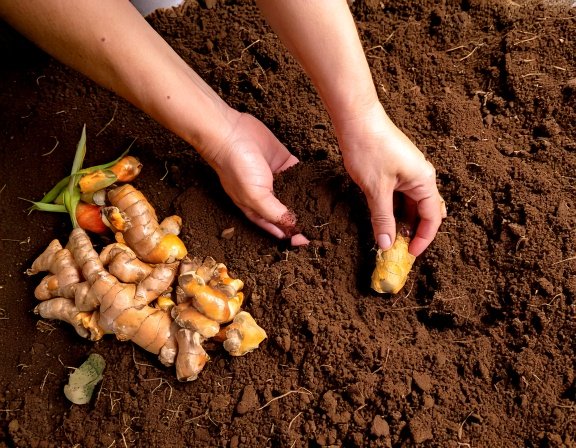
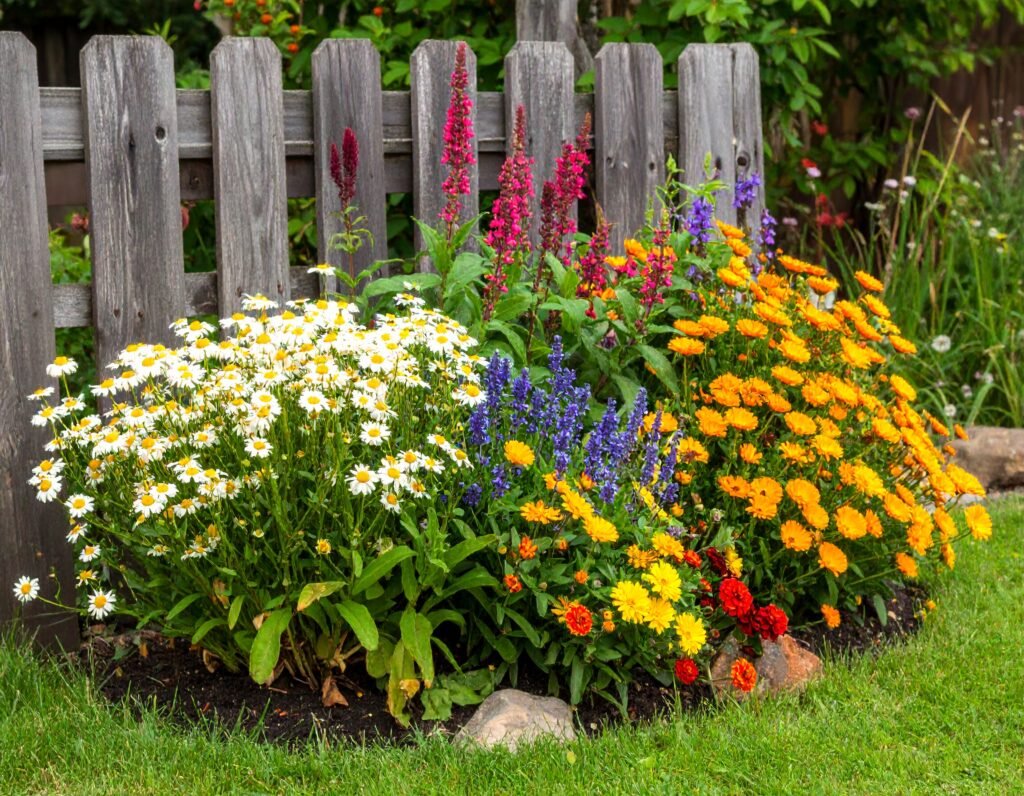
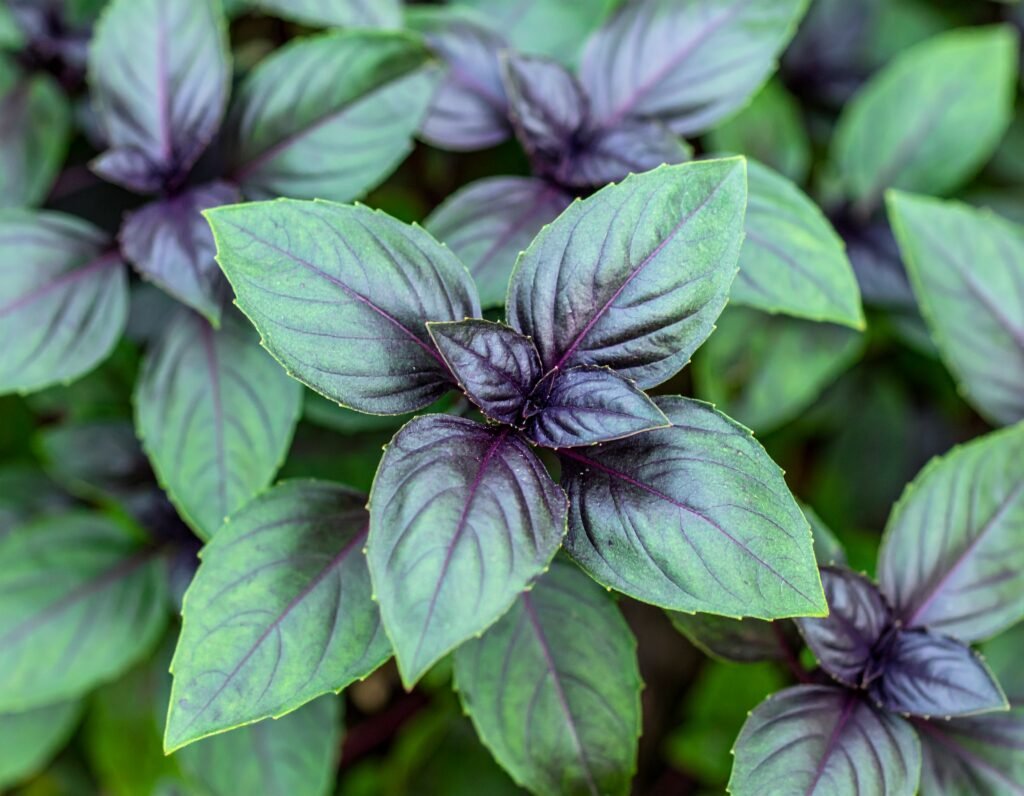
Complete starter kit with turmeric, ginger, garlic, and basil—grow wellness at home, year-round.
Shop the Kit
How to Design and Plant Your Anti-Inflammatory Bed
Location: Choose a sunny to partly shaded spot with rich, well-draining soil. Raised beds or large containers work well.
Bed Prep: Mix compost or aged manure into the soil to boost fertility and hold moisture.
Spacing: Plant turmeric and ginger rhizomes 10–12 inches apart, 2 inches deep.
Tuck garlic bulbs between or along the edge, 4–6 inches apart.
Dot calendula and basil plants throughout the bed for color, pollinators, and continuous harvest.
Watering: Keep the soil moist but not soggy—these plants appreciate humidity!
Mulch: Use straw or leaf mulch to maintain moisture and suppress weeds.
Grower’s Tip: Turmeric and ginger love warm, humid conditions. In cooler climates, start rhizomes indoors in pots in late winter, then transplant outside after frost. Calendula helps shade soil and deter pests, while basil improves pollination and keeps mosquitoes at bay!

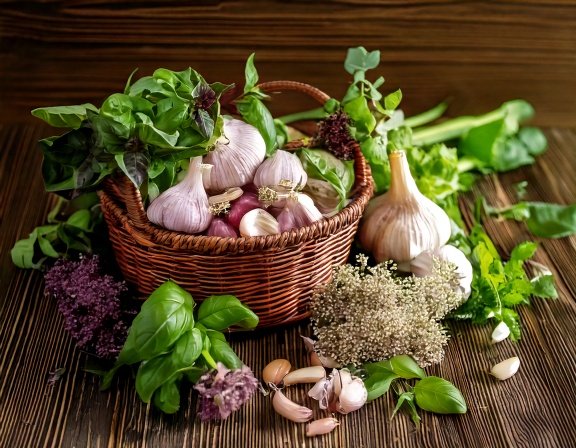
How to Harvest for Year-Round Healing
Turmeric & Ginger: Harvest roots after 8–10 months, when leaves yellow and die back. Carefully dig up rhizomes; wash, dry, and store for teas, curries, or DIY salves.
Garlic: Harvest when half the leaves are yellow. Cure bulbs in a dry, airy place, then store for year-round use.
Calendula: Pick blooms all season; use fresh or dried in teas, oils, or salves.
Basil: Snip leaves as needed—regular harvesting encourages bushier growth.
Okinawa Flat Belly Tonic: Daily Detox in a Glass
Supercharge your mornings—metabolic boost, clean ingredients, real results.
Start My DetoxThe Anti-Inflammatory Powerhouse
Active Compounds
Turmeric: Curcumin—potent anti-inflammatory and antioxidant, supports joint, digestive, and brain health.
Ginger: Gingerol—relieves pain, soothes digestion, and supports immunity.
Garlic: Allicin—fights inflammation, supports cardiovascular health.
Calendula: Flavonoids and carotenoids—soothe skin and calm inflammation.
Holy Basil: Eugenol, ursolic acid—reduce stress and inflammation, boost mood and immunity.
Add fresh or dried herbs from your garden to teas, soups, smoothies, or DIY remedies for a daily dose of plant-powered wellness.


Wellness from Garden to Table
Creating a themed anti-inflammatory bed is a living medicine chest—beautiful, fragrant, and full of health benefits. Whether you have a backyard or just a sunny balcony, this garden bed offers daily support for your body and spirit. Gather your “turmeric friends,” dig in, and experience the power of growing your own healing traditions!
Year-Round Uses:
Spring: Fresh basil and calendula leaves brighten salads and soups.
Summer: Harvest garlic, basil, and flowers for herbal teas and pestos.
Fall: Dig turmeric and ginger roots for storage and winter remedies.
Winter: Brew golden milk with garden turmeric and ginger, or make healing balms with calendula petals.
A single anti-inflammatory bed supplies a full year of healing ingredients—no supplement bottle required!
This herbal recipe is shared for educational purposes only, based on traditional use and available sources. It is not medical advice. Please consult your healthcare provider before use, especially if pregnant, nursing, or on medication.
Did you know?
In ancient Ayurvedic medicine, turmeric and ginger were called “healing gold” and “universal medicine.” Calendula was used to speed wound healing, and holy basil was sacred in temple gardens for its purifying energy!
Ready to plant your own anti-inflammatory medicine bed? Subscribe to Health Intel Daily for more!
Subscribe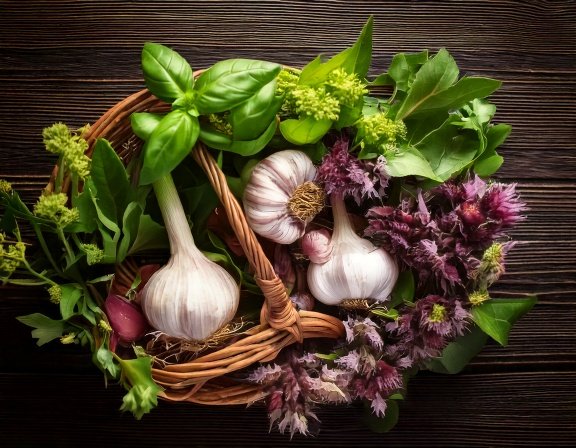
The content on this website is for informational purposes only and is not a substitute for professional medical advice, diagnosis, or treatment. Always seek the advice of your physician or other qualified health provider with any questions you may have regarding a medical condition.
1. Hewlings, S.J. & Kalman, D.S. “Curcumin: A Review of Its’ Effects on Human Health.” Foods, 2017.
2. National Institutes of Health. “Ginger.” nccih.nih.gov/health/ginger
3. National Center for Complementary and Integrative Health. “Garlic.” nccih.nih.gov/health/garlic
4. Plants for a Future. “Calendula officinalis,” “Ocimum sanctum.” pfaf.org